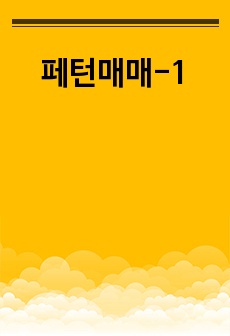소개글
북한의 인권 문제를 차례대로 분석 정리한 영문 에세이 입니다목차
INTRODUCTIONHISTORY OF KOREA/NORTH KOREA
POLITICS
HUMAN RIGHTS
Freedom of Speech and Assembly
Freedom of the Press and Communication Access
Freedom of Religion
Freedom of Movement
PRISON CAMPS
Prison Camp Life
Death and Torture
RECENT CAUSES FOR CONCERN
CONCLUSION
본문내용
INTRODUCTIONNorth Korea is possibly the least accessible, and "the most brutal and repressive country in the world." (Martin, 2006) Since its formation after World War II very little information has left the country. What has left are the defectors and the stories of horrible atrocities against humanity the government is bestowing upon its citizens. Classified as a democracy, it is just a mask hiding the Kim Dynasty`s totalitarian ways.With its ideology of "Juchete of economic need.HISTORY OF KOREA/NORTH KOREAplannedto gain from the peninsula economically. These giants held fierce competition against each other which sparked several wars. In 1894 and 1895 there was the Sino-Japanese War, and later, from 1904 to 1905 was the Russo-Japanese War
<중 략>
get from outside sources. The testing of North Korea`s first bomb in 2006, there have been many moves to attempt to de-nuclearize the North. Yet still, talks are still being made to attempt to join North and South Korea and bring peace to the area. The state, due to its Juchees of food and power. Monthly wage of farmers decreased in 2005 when a ban on free markets was raised, where in some cases they did not make over $1 a month creating a giant surge for those to change jobs, creating a larger deficit in food.
참고 자료
BOOKSLankov, A. (2002, January). Kim Takes Control:The `Great Purge ` in North Korea,1956--1960. Korean Studies
Martin, B. (2006) Under the Loving Care of the Fatherly Leader: North Korea and the Kim Dynasty. St. Martin`s Press
Korea, North. (2006). World Almanac & Book of Facts
MAGAZINES
Dodds, K. (2007, February). NORTH KOREA. Geographical
North Korea Profile. (2006, November). International Debate. Vol. 4 Issue 8
OTHER PUBLICATIONS
Kang, Kwang-Shick. (2001, September). Juche Idea and the Alteration Process in Kim Il Sung`s Works: A Study on How to Read Kim Il-Sung`s Works. Monash University: KSAA Conference 2001.
Lee, Soon-Ok. (2002, May). Statement of Sun-Ok Lee, Former Prison and Camp Survivor.
Testimony to the United States Government
INTERNET
Background Note: North Korea. U.S. Department of State. Retrieved October 12th, 2007 from
http://www.state.gov/r/pa/ei/bgn/2792.htm.
Country
Reports on Human Rights Practices – 2005: North Korea. (2006, March) U.S. Department of State. Retreived on October 27th from http://www.state.gov/g/drl/rls/hrrpt/2005/61612.htm
Foster-Carter, Aiden. (2002, July). North Korea`s Tentative Telecoms. Retrieved October 12th, 2007 from http://www.atimes.com/atimes/Korea/DG06Dg02.html.
Freedom House Country Report: North Korea (2006). Retrieved October 12th, 2007 from
http://freedomhouse.org/template.cfm?page=22&year=2006&country=6993.
Hawk, David. (2003). The Hidden Gulag: Exposing North Korea`s Prison Camps Prisoners` Testimonies and Satellite Photographs. U.S. Committee for Human Rights in North Korea. http://www.hrnk.org/hiddengulag/toc.html.
Kang, Chol-Hwan. (2001, December). 5,000 Prisoners Massacred at Onsong Concentration Camp in 1987. Retreived October 13th, 2007 from http://english.chosun.com/w21data/html/news/200212/200212110038.html
LiNK: Liberty in North Korea. Retreived on October 19th, 2007 from
http://www.linkglobal.org/north-korea.html.
New Reports Tell of Executions, Torture of Christians in North Korea. (2005, November). Christian Today. Retrieved on October 19th, 2007 from http://www.christiantoday.com/article/new.reports.tell.of.executions.torture.of.christians.i n.north.korea/4623-2
USC-UCLA East Asian Studies Documents, Treaty of Annexation. Retrieved October 12th 2007 from http://www.isop.ucla.edu/eas/documents/kore1910.htm.



















